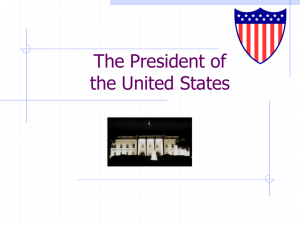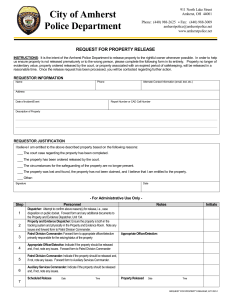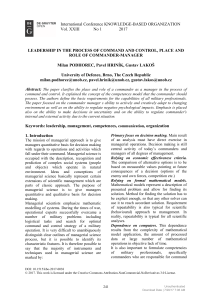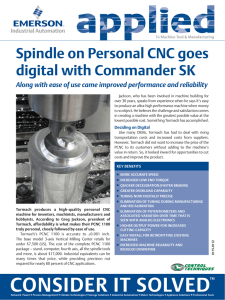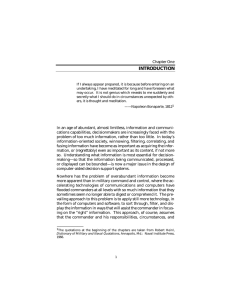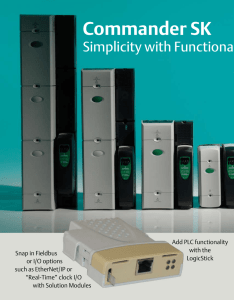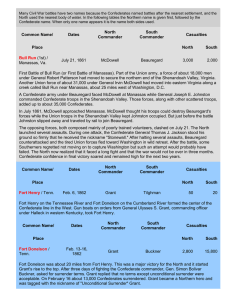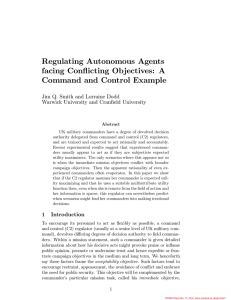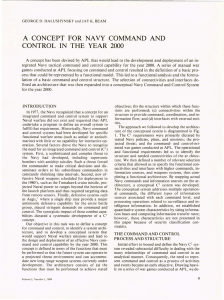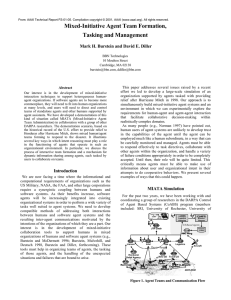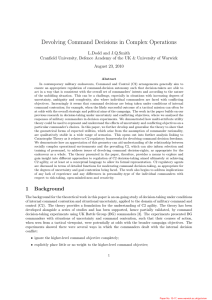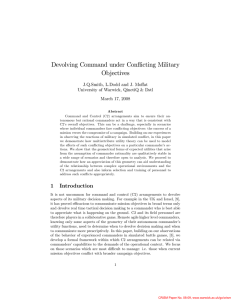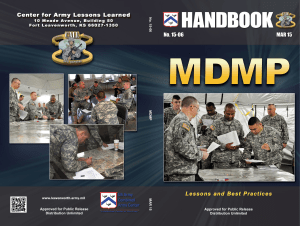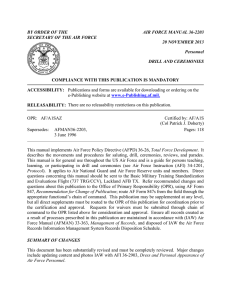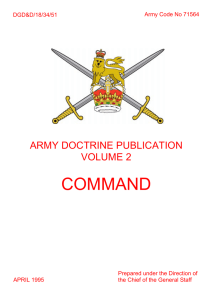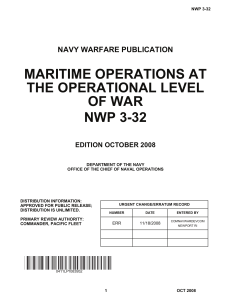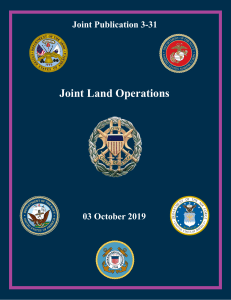Assessing Locally Focused Stability Operations
advertisement
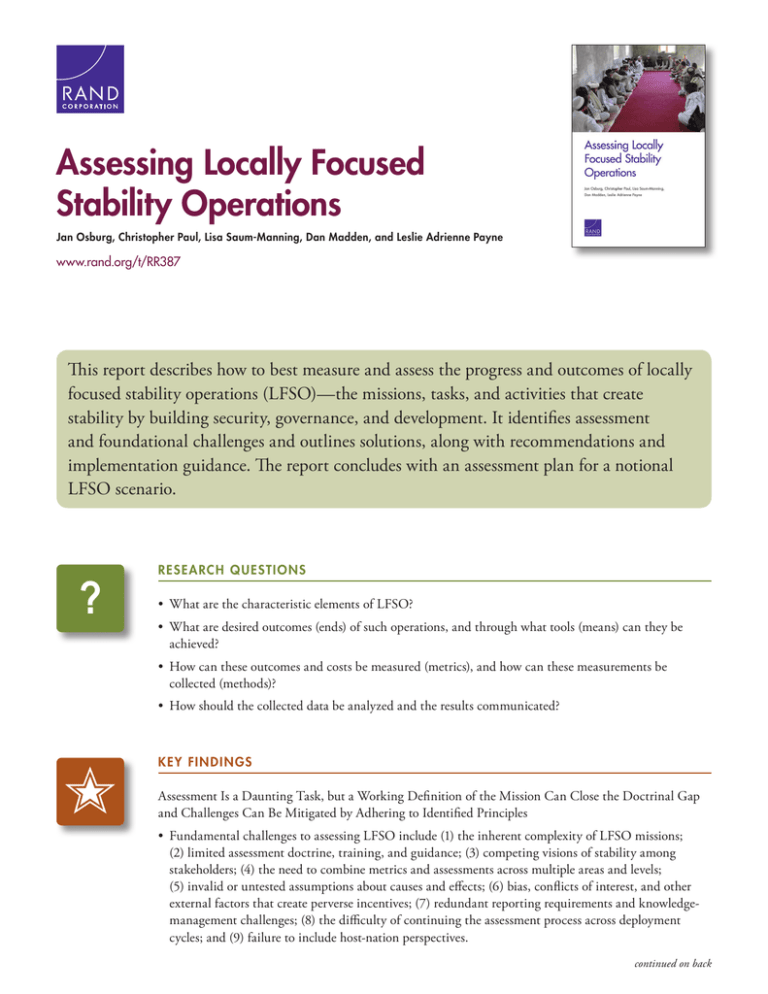
C O R P O R AT I O N Assessing Locally Focused Stability Operations Jan Osburg, Christopher Paul, Lisa Saum-Manning, Dan Madden, and Leslie Adrienne Payne www.rand.org/t/RR387 This report describes how to best measure and assess the progress and outcomes of locally focused stability operations (LFSO)—the missions, tasks, and activities that create stability by building security, governance, and development. It identifies assessment and foundational challenges and outlines solutions, along with recommendations and implementation guidance. The report concludes with an assessment plan for a notional LFSO scenario. ? Rese arc h Q u esti o ns • What are the characteristic elements of LFSO? • What are desired outcomes (ends) of such operations, and through what tools (means) can they be achieved? • How can these outcomes and costs be measured (metrics), and how can these measurements be collected (methods)? • How should the collected data be analyzed and the results communicated? ✭ K e y Fi n d i n gs Assessment Is a Daunting Task, but a Working Definition of the Mission Can Close the Doctrinal Gap and Challenges Can Be Mitigated by Adhering to Identified Principles • Fundamental challenges to assessing LFSO include (1) the inherent complexity of LFSO missions; (2) limited assessment doctrine, training, and guidance; (3) competing visions of stability among stakeholders; (4) the need to combine metrics and assessments across multiple areas and levels; (5) invalid or untested assumptions about causes and effects; (6) bias, conflicts of interest, and other external factors that create perverse incentives; (7) redundant reporting requirements and knowledgemanagement challenges; (8) the difficulty of continuing the assessment process across deployment cycles; and (9) failure to include host-nation perspectives. continued on back • The following steps can be used to assess LFSO and similar operations: (1) identify the challenges specific to the scenario; (2) establish the Theory of Change behind the planned operation to help document the expected results and describe how activities and tasks are linked to those results; (3) determine metrics and how and when to collect them; (4) set up processes for data analysis (including aggregation) and communication of results; and (5) develop options for briefing leadership and stakeholders on the assessment plan. To Do R ecomm en dati o ns • Assessments should be commander-centric. If the assessment process does not directly support the commander’s decisionmaking, it should be revised. • Assessments should reflect a clear Theory of Change. In order for the assessment team to adequately support the commander, it must understand not only the commander’s objectives, but also the underlying Theory of Change—how and why the commander believes the tasks that have been laid out will result in the desired end state. A clearly articulated Theory of Change allows the assessment team to identify the appropriate inputs, outputs, and outcomes to measure, and also enables it to determine whether critical assumptions built into the concept of operations may, if proven faulty, require the commander to adjust the campaign plan. • Assessments should seek to “triangulate the truth.” Assessment teams should fully exploit the data and methods available, leveraging the strengths of one source against the weaknesses of others to obtain valid estimates for the ground truth. The assessment team should exploit the healthy tension between quantitatively and qualitatively focused analysts and ensure that analyses are synchronized to support the commander’s objectives. A RRO YO CENT ER RAND Arroyo Center is the Army’s federally funded research and development center for studies and analyses. Its mission is to help Army leaders make decisions that are informed by objective, high-quality analysis. For more information visit Arroyo’s website at www.rand.org/ard.




